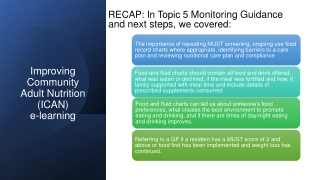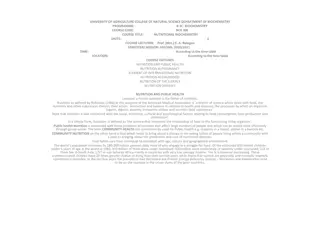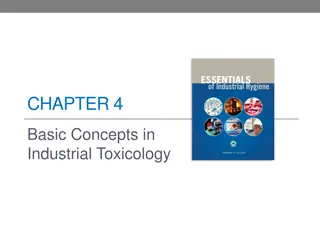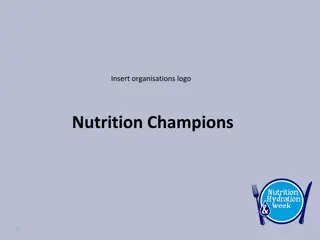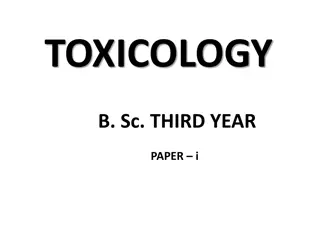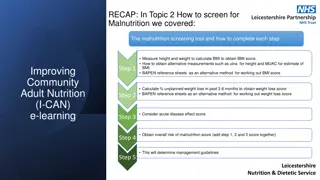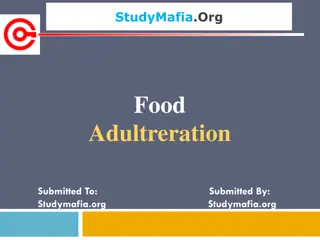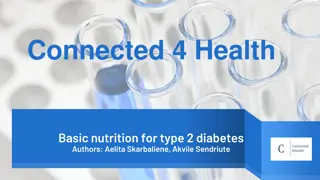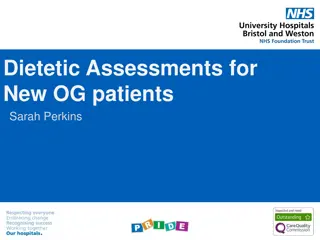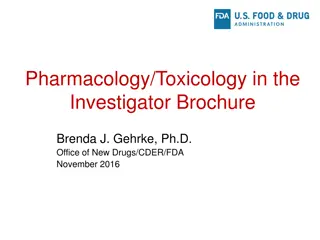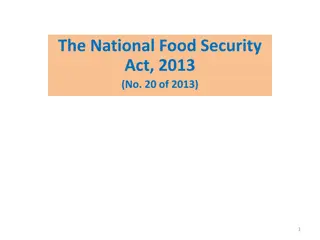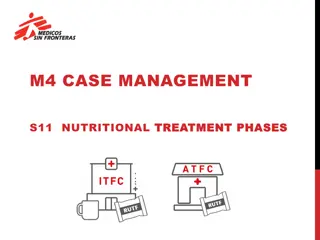Understanding Food and Nutritional Toxicology
Food and nutritional toxicology delve into the science of poisons, toxins, and toxicants found in food. It covers substances harmful to consumers, including natural toxicants, contaminants, and additives. Nutritional toxicology focuses on the overlap between nutrition and toxicology, exploring the impact of substances on our health.
Download Presentation

Please find below an Image/Link to download the presentation.
The content on the website is provided AS IS for your information and personal use only. It may not be sold, licensed, or shared on other websites without obtaining consent from the author. Download presentation by click this link. If you encounter any issues during the download, it is possible that the publisher has removed the file from their server.
E N D
Presentation Transcript
FOOD AND NUTRITIONAL TOXICOLOGY
toxicology is the science of poisons, toxicants, or toxins Toxins are small poisonous molecules, peptides, or animals, and other organisms like viruses, fungi, bacteria, or protozoa.
The term Toxin usually refers to a poison derived from a protein or conjugated protein produced by some higher plant, animal, or pathogenic bacteria that is highly poisonous for other living organisms, e.g., botulinum toxins
The term Toxicant can be a synonym for Poison , or the term Poison might be more appropriate for the most potent substances, i.e., substances that induce adverse effects at exposure levels of a few milligrams per kilogram of body weight A toxin is a poison, not all poisons are toxins
Food toxicology deals with substances found in food that might be harmful to those who consume sufficient quantities of the food containing such substances
Nutritional toxicology is the study of the nutritional aspects of toxicology Nutritional toxicology is related to and might even overlap but is not synonymous with food toxicology
Potential sources of toxicants in food include nutrients, natural food toxicants, contaminants, and chemicals or substances intentionally added to food (food additives).
There are some notable examples of natural food toxicants: toxicant is the toxin produced by the puffer fish Poisonous Mushroom Amanita muscaria many phytochemicals are produced as secondary metabolites, have become important defense chemicals used by the plant
food additives : Butylated hydroxytoluene (BHT) nitrite microbial retardants such as calcium propionate texturing agents and flavors residues from fertilizers, pesticides, veterinary pharmaceuticals and drugs environmental chemicals such as lead or polychlorinated biphenyl (PCB)
Some additives are generally recognized as safe (GRAS) items and require no testing for safety. Others require a battery of tests to ensure their safety for use in consumer foods No chemical agent is entirely safe and no chemical agent should be considered entirely harmful
The single most important factor determining the potential harmfulness or safeness of a compound is the relationship between the concentration of the chemical and the effect produced on the biological mechanism
the effective dose (ED) and the lethal dose(LD) ED endpoints are usually therapeutic efficacies, such as the dose to produce anesthesia or analgesia The calculated LD50 is the statistically estimated dose that when administered to a population will result in the death of 50% of the population
BONE MINERAL MASS More than 90% of BM is accrued during childhood and adolescence More than 80% of BM is found in the skeleton Patients with type 2 diabetes mellitus have more fragility fractures THE END


